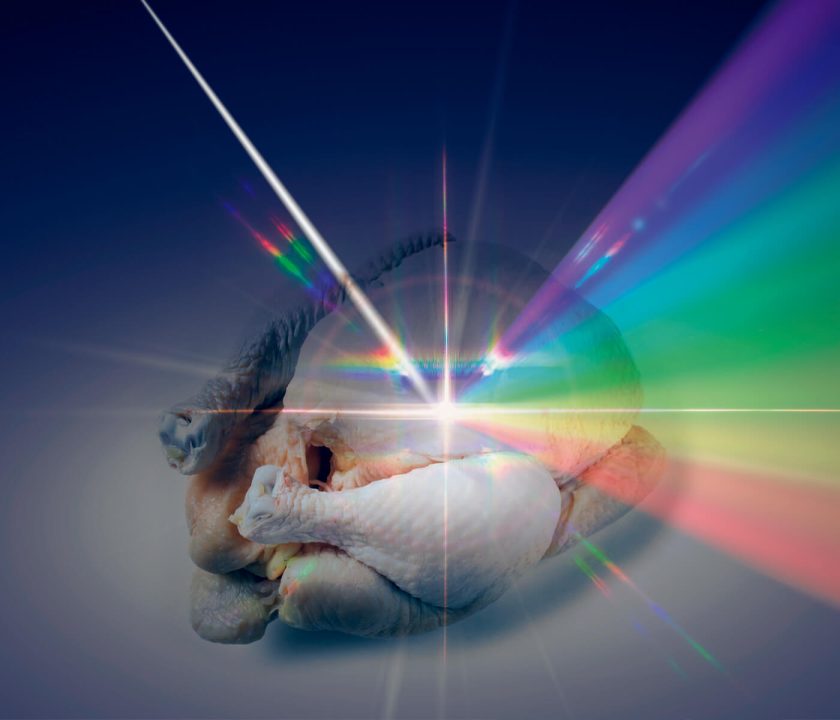Content available at: Español (Spanish)
When consumers buy chicken meat, price, and quality are important to their decisions. However, an increasing number of consumers are also considering the health implications associated with their consumption.
For these reasons, developing rapid, environmentally friendly, and noninvasive methods for meat quality prediction or authentication of value-added meat products has become a priority in recent years.
In this sense, near-infrared spectroscopy (NIRS) could be considered a fast and cost-effective alternative.
Fundamentals of Near Infrared Spectroscopy (NIRS)
Although NIRS is known as a new technology, it was discovered in the 1800s when Herschel found that the scattering of electromagnetic waves beyond the visible range of the spectrum could be observed by using an array of blackened bulb thermometers. However, it was not until the 1960s that significant developments in NIRS technology occurred.
Figure 1: Classification of rays according to their wavelength
Near-infrared spectroscopy measures the absorption of electromagnetic radiation, including wavelengths from 750 to 2,500 nm.
Advantages and limitations of NIRS technology
Among the advantages of the application of NIRS technology concerning traditional methods of
Keep up to date with our newsletters
Receive the magazine for free in digital version
REGISTRATION
ACCESS
YOUR ACCOUNT
LOGIN
Lost your password?

